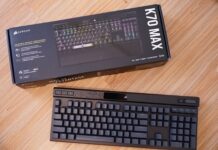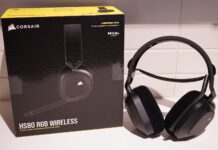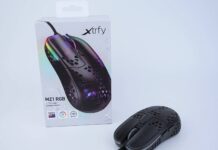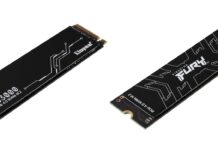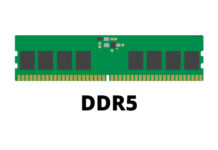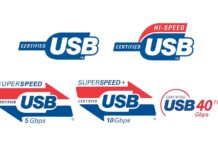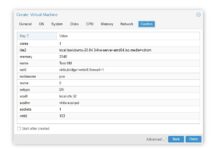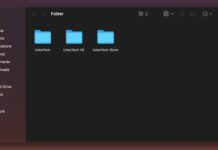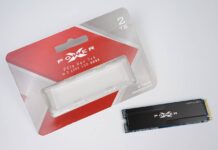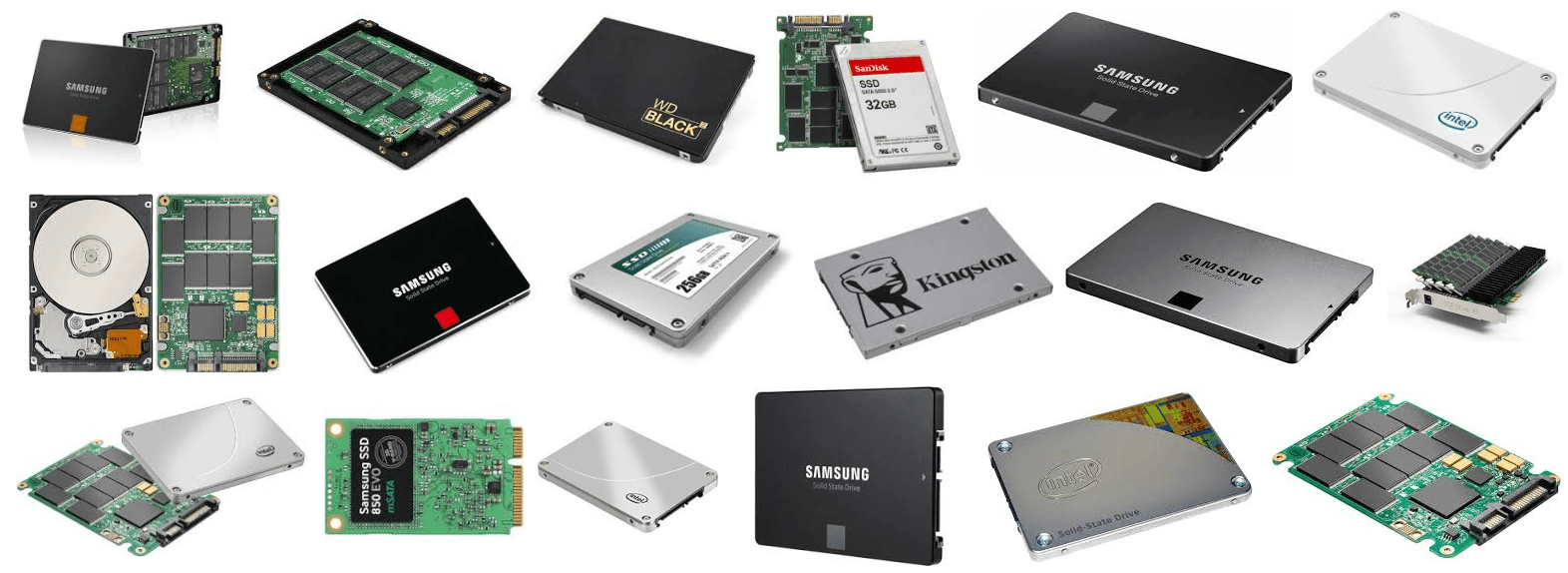
Solid-State-Drive (SSD) is another form of storage using NAND flash instead of magnets like Hard Drive (HDD). It is a much superior storage medium than HDD in terms of transfer speed. SSDs become more popular in the last couple years. However, flash memory inside an SSD will wear down after a certain amount of write cycles. The drive’s storage integrity will start deteriorating after that.
There are rumours about using cheaper Triple-Level-Cell (TLC) memory instead of MLC or SLC memory will increase the chance of drive failure. Do the memory types affect the lifespan of SSDs? Do the manufacturers tell the truth about their drives’ endurance?
Memory Types
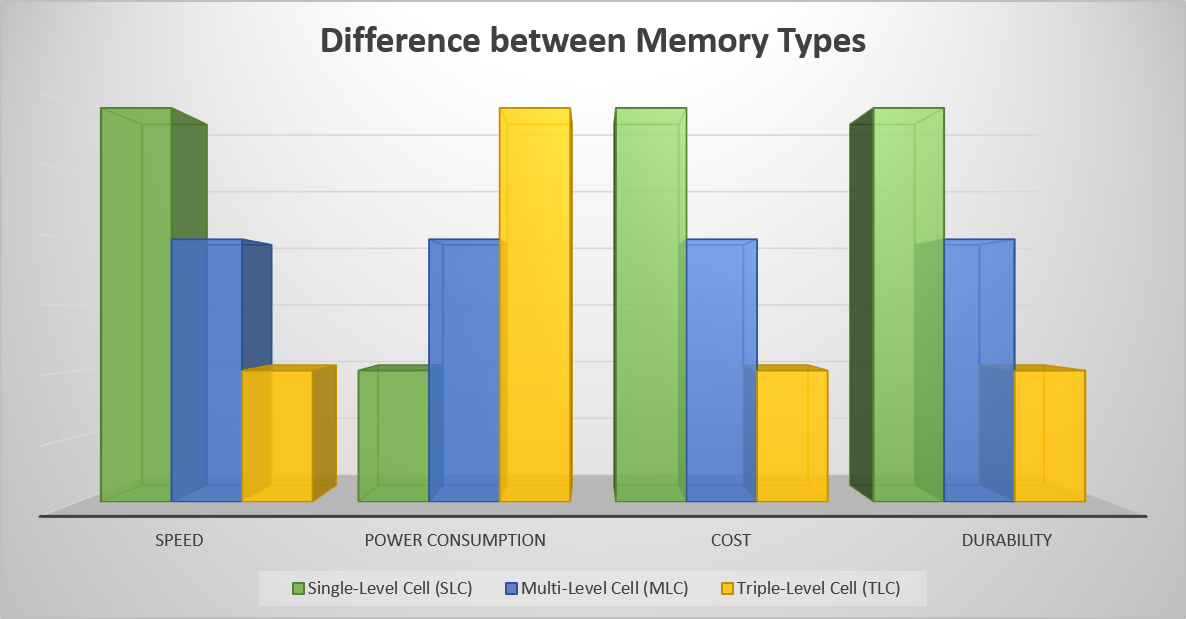
SLC memory is the fastest and most durable one among MLC and TLC, with the benefit of consuming the least amount of power. This is important for extending the battery life of your laptop. But SLC costs the most to manufacture.
MLC memory stays in the middle at all areas, but it takes less physical space in the PCB while being able to hold more data on each flash memory chip. TLC memory are common to see in consumer-grade SSDs, due to its cheaper cost. Yet, its theoretical lower durability causes customers to back off.
Claimed Endrance?
When you are buying a SSD, the manufacturers would have a section called Terabytes Written (TBW) or Drive Writes Per Day (DWPD). What it means is a certain amount of data can be written before the drive will stop working. Most companies will stat the drive to run properly for couple years, normally about 5 years. But do all those claims correct or honest?
A German tech website, Heise, therefore started a test in June 2016 to test how durable SSDs are. They tested 6 different models of SSDs with a 250GB capacity, ranging from budget to high-end drives. Their testing methodology is simple, just keep writing data into the drives until they cannot operate anymore. On 22nd June 2017, the last SSD stopped functioning. Their results are very informative and astonishing.
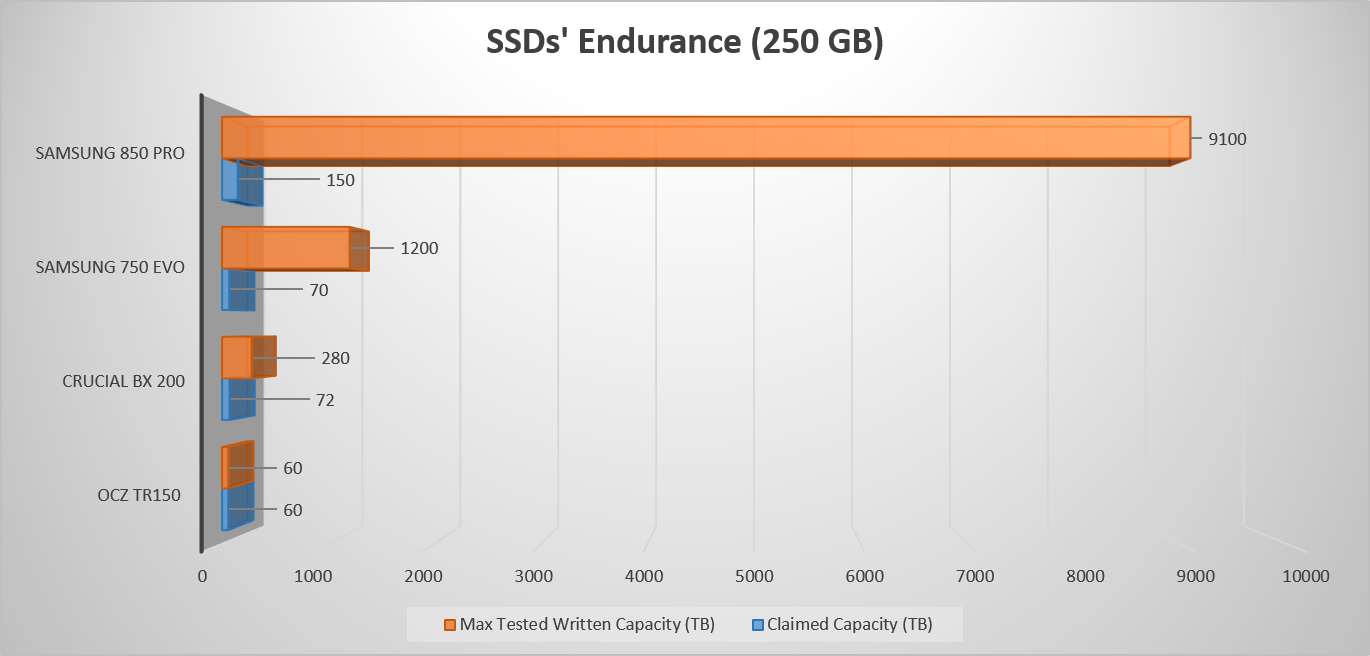
Lower priced SSDs that use TLC are claimed to have around 60 TBW, while those more expensive MLC SSD are claimed to have up to 150 TBW. In their test, all of the SSD samples reached or exceeded their claimed TBW.
Heise stated that you would be writing about 10 to 35GB to the drives per day in a normal office environment. A SSD with 70 TBW will be able to stand up to 5 years, even if you write 40 GB per day to it.
The Crucial BX200 reached 187 TBW and 280 TBW for the two identical samples, which is at least 2.5 times more than its claimed 72 TBW. The Samsung 750 EVO got up to 1.2 PBW (1200 TBW), about 17 times more. The Samsung 850 Pro has the highest 150 TBW rated endurance, but it achieved up to 9.1 PBW (9100 TBW) finally. It is about 60 times more data written. You can use the 850 Pro for 623 years theoretically.
Conclusion
You no longer need to worry about SSDs’ lifespan when you are purchasing one. Most of the manufacturers are being very conservative about their drives’ endurance. Not only those high-end SSDs have excellent durability, but also those budget ones.
With the added advantage of faster performance, it becomes more like a necessities to have a SSD in your computer, even a small-sized one for the operating system.
SSDs used in Heise’s test:
- Crucial BX200
- OCZ TR150
- SanDisk Extreme PRO
- SanDisk Ultra II
- Samsung 750 EVO
- Samsung 850 Pro
Sources from Heise and The WindowsClub.
Feel free to leave comments below, if you have any opinion about this website. Share the website around if you enjoy reading it. Subscribe to our Newsletter or follow our Google+, Facebook and Twitter.
Support this website simply by shopping in Amazon. It will give us small kickbacks, if you use the above affiliate links to make any purchases, which will help us grow.


